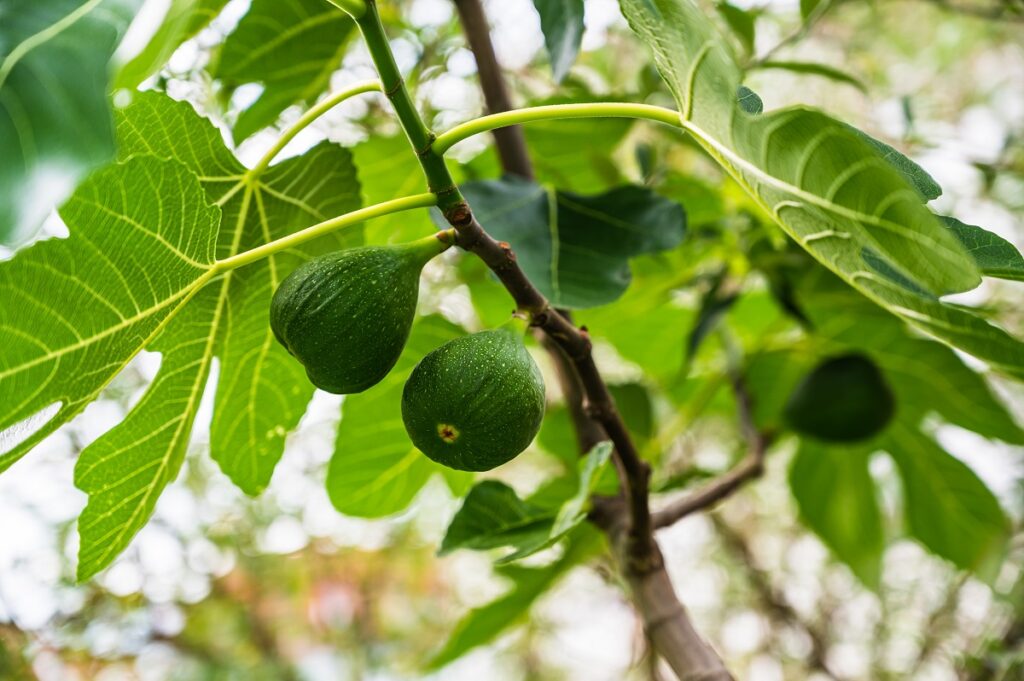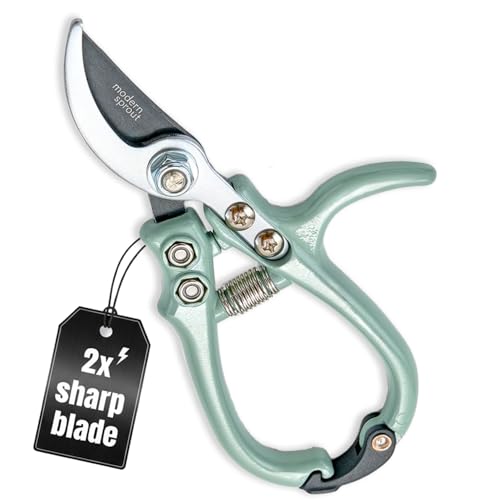Introduction
Did you know that growing figs can transform your backyard into a productive orchard while generating significant income? Whether you’re a homesteader looking to expand your fruit garden or a small-scale farmer seeking crop diversification, fig cultivation offers an accessible entry point into fruit production.
Figs (Ficus carica) are remarkably forgiving trees that thrive across many USDA hardiness zones, require minimal maintenance, and produce abundant harvests. Better yet, the growing demand for fresh and dried figs in American markets—coupled with limited domestic production—creates lucrative opportunities for new growers.
In this comprehensive guide, you’ll discover everything you need to know about how to plant figs, nurture healthy trees, and harvest premium-quality fruit—even if you’ve never grown fruit trees before.
Why Growing Figs Makes Economic and Agricultural Sense
Nutritional Powerhouse with Market Appeal
Figs are nutritional gems packed with dietary fiber, antioxidants, and essential minerals including calcium, potassium, and magnesium. Their versatility extends beyond fresh consumption—figs excel in value-added products like preserves, jams, dried fruit, and even artisanal fig bars that command premium prices at farmers’ markets.
Low-Maintenance, High-Yield Cultivation
Fig trees are exceptionally resilient compared to other fruit crops. They naturally resist many common pests and diseases, tolerate drought conditions once established, and can produce 50-100 pounds of fruit per mature tree annually. This combination of hardiness and productivity makes figs ideal for both hobby growers and commercial operations.
Growing Market Demand
The U.S. imports over 90% of its figs, primarily from Turkey and other Mediterranean countries. This dependency creates opportunities for domestic growers to supply local markets with fresh figs—a premium product that doesn’t ship well and fetches higher prices when locally grown.
How to Plant Fig Trees: Step-by-Step Guide
Step 1: Select the Right Fig Variety for Your Region
Choosing climate-appropriate varieties is crucial for success. Here are top varieties for American growers:
For Warmer Climates (USDA Zones 8-10):
- Brown Turkey – Highly adaptable, cold-hardy for a fig, produces sweet brown-purple fruit
- Celeste (Sugar Fig) – Small sweet fruit, excellent for fresh eating, performs well in the Southeast
- Black Mission – Classic California variety, ideal for drying, thrives in hot climates
For Cooler Climates (USDA Zones 6-7):
- Chicago Hardy – Survives temperatures down to 10°F, productive in Northern states
- Osborne Prolific – Cold-tolerant, reliable producer in marginal climates
For Container Growing:
- Petite Negra – Compact growth habit perfect for patio containers
- Desert King – Produces well with minimal heat, suitable for Pacific Northwest
Pro Tip: Contact your local Extension office or reputable nurseries for region-specific recommendations and disease-resistant stock.

Step 2: Understanding Climate and Soil Requirements
Climate Considerations
Fig trees thrive in warm, dry climates with hot summers and mild winters. Optimal growing conditions include:
- Temperature range: 70°F-90°F during growing season
- Chilling hours: Minimal (100-200 hours below 45°F)
- Frost tolerance: Mature trees tolerate brief dips to 15-20°F; prolonged freezes damage branches
Regional Adaptations:
- California & Southwest: Ideal climate with hot, dry summers
- Southeast: High humidity requires careful variety selection
- Pacific Northwest: Cooler summers favor certain varieties like Desert King
- Northern States: Winterizing techniques or container growing extends fig cultivation to Zone 5
Soil Requirements
Figs are adaptable but perform best in:
- Well-drained soil (critical—figs hate wet feet)
- Rich organic matter content (2-5%)
- pH range: 6.0-6.5 (slightly acidic to neutral)
- Soil texture: Sandy loam to loamy soil ideal
Testing and Amendment: Before planting, conduct a soil test through your local Extension service ($10-30). Amend based on results:
- Low pH: Add agricultural lime
- Poor drainage: Incorporate compost and consider raised beds
- Nutrient deficiency: Mix aged manure or balanced organic fertilizer
Step 3: Site Preparation and Soil Preparation
Proper site preparation sets the foundation for decades of production:
- Choose the location carefully:
- Full sun exposure (8+ hours daily)
- Southern or western exposure in cooler climates
- Protection from strong winds
- Away from buildings and power lines (mature trees reach 10-15 feet)
- Prepare planting holes:
- Dig holes 2-3 feet wide and 2 feet deep
- Break up compacted soil at the bottom
- Mix excavated soil with 30-40% compost or aged manure
- Consider adding mycorrhizal fungi to boost root establishment
- Spacing guidelines:
- Standard trees: 15-20 feet apart
- Dwarf varieties: 8-10 feet apart
- Hedge/espalier training: 6-8 feet apart
- Container specimens: One tree per 15-20 gallon container
Step 4: Planting Your Fig Tree
Timing: Plant bare-root figs in late winter/early spring (March-April) or container-grown trees spring through early fall.
Planting Process:
- Bare-root trees:
- Soak roots in water for 2-3 hours before planting
- Trim any damaged roots with clean shears
- Create a soil mound in the planting hole center
- Spread roots over the mound naturally
- Container-grown trees:
- Water thoroughly 24 hours before transplanting
- Gently tease apart circling roots
- Plant at the same depth as the container
- Final steps:
- Backfill with amended soil mixture
- Firm soil gently to eliminate air pockets
- Create a water basin around the tree
- Water deeply (3-5 gallons) immediately after planting
- Apply 3-4 inch mulch layer (keep 4 inches from trunk)
- Install support stake if needed in windy locations
Step 5: Essential Post-Planting Care
Watering Strategy
Establishment phase (First year):
- Water deeply twice weekly during growing season
- Provide 1-2 inches of water per week
- Reduce frequency in fall
Mature trees:
- Drought-tolerant once established
- Deep watering every 2-3 weeks during dry spells
- Increase frequency during fruit development
- Reduce water as fruit ripens for sweeter flavor
Pro Tip: Drip irrigation systems deliver consistent moisture while preventing foliar diseases common with overhead watering.
Weed Management
Maintain a 3-4 foot weed-free circle around young trees:
- Hand pull or carefully hoe shallow-rooted weeds
- Apply 3-4 inch organic mulch layer (wood chips, straw, or leaves)
- Refresh mulch annually
- Keep mulch away from trunk to prevent rot
Pruning Fundamentals
First-year pruning (formative):
- Prune at planting to 24-36 inches to encourage branching
- Select 3-4 strong scaffold branches the first summer
- Remove competing or inward-growing shoots
Maintenance pruning (mature trees):
- Prune during dormancy (late winter before bud break)
- Remove dead, diseased, or crossing branches
- Thin center for light penetration and air circulation
- Limit height to 8-10 feet for easier harvesting
- Remove 20-30% of older wood annually to promote new fruiting wood
Important: Figs fruit on new growth, so strategic pruning increases yield.
Fertilization Program
Young trees (Years 1-3):
- Apply balanced organic fertilizer (5-5-5) monthly during growing season
- Use 1 cup per application, increasing as tree grows
Mature trees:
- Early spring: Balanced fertilizer (10-10-10) at 1-2 pounds per tree
- Mid-summer: Compost side-dressing or liquid fish emulsion
- Avoid over-fertilization, which produces excessive foliage at the expense of fruit
Organic alternatives:
- Aged chicken manure (2-3 inches around dripline)
- Compost tea applications monthly
- Worm castings for containerized trees

Advanced Tips to Maximize Fig Production
Implement Efficient Irrigation
Drip irrigation offers multiple advantages:
- Conserves water (50% reduction vs. overhead)
- Prevents fungal diseases
- Delivers nutrients directly to root zone
- Maintains consistent soil moisture
Install emitters 18-24 inches from trunk, expanding the irrigation zone as trees mature.
Mulching for Moisture and Weed Control
Organic mulches provide year-round benefits:
- Regulates soil temperature
- Retains soil moisture
- Suppresses weeds
- Adds organic matter as it decomposes
Best mulch materials: Straw, wood chips, shredded leaves, or pine needles. Avoid fresh wood chips near trunk.
Natural Pest Management
Figs have few serious pests, but monitor for:
Fig beetles (Cotinis mutabilis):
- Hand pick adults
- Cover ripening fruit with organza bags
Root-knot nematodes:
- Plant nematode-resistant varieties
- Incorporate beneficial nematodes into soil
- Practice crop rotation if possible
Scale insects:
- Apply horticultural oil during dormancy
- Introduce beneficial insects like ladybugs
Birds:
- Net trees as fruit ripens
- Use reflective tape or bird scare devices
Harvest Timing and Techniques
Identifying ripe figs:
- Fruit becomes soft to gentle touch
- Skin develops characteristic color (variety-dependent)
- Fruit bends slightly at neck
- Small cracks may appear in skin
- Milky sap no longer present when stem is cut
Harvesting best practices:
- Pick figs when fully ripe—they don’t ripen off the tree
- Harvest every 2-3 days during peak season
- Twist gently or use pruning shears
- Wear gloves and long sleeves (sap irritates skin)
- Refrigerate immediately after harvest (3-5 day shelf life)
Fascinating Fig Facts
- Not technically a fruit: Figs are inverted flowers called synconiums—tiny flowers bloom inside the developing fruit
- Ancient crop: Figs are among humanity’s oldest cultivated plants, dating back over 11,000 years
- Self-fertile varieties: Most modern cultivars don’t require the fig wasp pollination that wild figs need
- Impressive yields: A mature tree can produce two crops annually in warm climates (breba crop in spring, main crop in summer)
- Digestive benefits: Figs contain natural enzymes and fiber that promote gut health
- Minimal processing: Fresh figs contain no fat, cholesterol, or sodium—pure nutrition
Winterizing Fig Trees in Cold Climates
For growers in USDA Zones 5-7, winter protection extends fig cultivation northward:
Outdoor Winter Protection
- In-ground method:
- After first frost, prune tree to 4-6 feet
- Tie branches together loosely
- Create chicken wire cage around tree
- Fill cage with dry leaves, straw, or wood chips
- Wrap exterior with burlap or tarp
- Remove protection after last spring frost
- Trench method:
- Suitable for young, flexible trees
- Dig trench alongside tree
- Carefully bend tree into trench
- Cover with soil and mulch
- Mark location clearly
Container Growing for Cold Climates
- Move containers to unheated garage or basement
- Maintain temperatures between 30-45°F
- Water sparingly (once monthly)
- Return outdoors after last frost
Troubleshooting Common Fig Growing Problems
Problem: Fruit drops before ripening
- Causes: Water stress, over-fertilization, temperature fluctuations
- Solutions: Consistent watering, reduce nitrogen, select adapted varieties
Problem: Poor fruit production
- Causes: Excessive nitrogen, improper pruning, insufficient chilling
- Solutions: Reduce fertilizer, prune correctly, choose low-chill varieties
Problem: Yellowing leaves
- Causes: Overwatering, nutrient deficiency, root problems
- Solutions: Improve drainage, soil test and amend, check for root rot
Problem: Leaf spots or rust
- Causes: Fungal diseases, excessive humidity
- Solutions: Improve air circulation, remove affected leaves, apply copper fungicide if severe
Marketing Your Fig Harvest
Once you’ve mastered fig cultivation, consider these revenue streams:
Direct sales:
- Farmers’ markets (fresh figs sell for $6-12/pound)
- CSA boxes and farm subscriptions
- Local restaurants and chefs (premium pricing)
Value-added products:
- Fig preserves and jams ($8-12 per jar)
- Dried figs ($15-20 per pound)
- Fig bars and baked goods
- Fig vinegar and infused honey
U-Pick operations:
- Agritourism opportunity
- Reduces harvest labor
- Builds customer relationships
Conclusion: Start Your Fig Growing Journey Today
Growing figs combines agricultural simplicity with economic opportunity. Whether you’re planting a single backyard tree or establishing a commercial orchard, figs deliver reliable harvests with minimal inputs once established.
The keys to success are straightforward: choose climate-appropriate varieties, provide well-drained soil, maintain consistent moisture during establishment, and prune annually. Within 2-3 years, you’ll enjoy abundant harvests of this ancient fruit that’s experiencing a modern revival.
Beyond their delicious flavor and nutritional benefits, fig trees add Mediterranean elegance to any landscape while providing decades of productive harvests. Their low-maintenance nature makes them ideal for beginning fruit growers, while their market value attracts experienced farmers seeking diversification.
Ready to start growing figs? Source quality plants from reputable nurseries, prepare your site properly, and follow the practices outlined in this guide. Your future self—and your taste buds—will thank you for planting that first fig tree today.
Frequently Asked Questions
How long does it take for a fig tree to produce fruit? Most varieties begin producing within 2-3 years. Some may fruit the first year if planted from mature nursery stock.
Can I grow figs in containers? Absolutely. Dwarf varieties thrive in 15-20 gallon containers, making them perfect for patios and small spaces.
Do fig trees need cross-pollination? Most common cultivars are self-fertile and don’t require another tree for pollination.
How much water do fig trees need? Established trees are drought-tolerant but produce better with consistent moisture—approximately 1-2 inches per week during growing season.
When is the best time to plant fig trees? Late winter to early spring for bare-root stock; container-grown trees can be planted spring through early fall.



